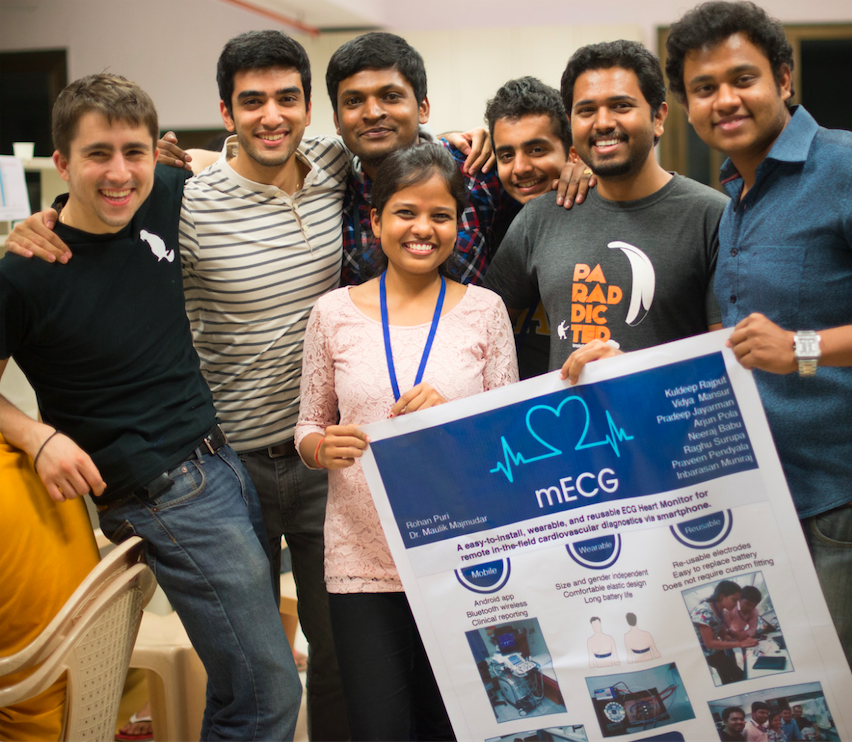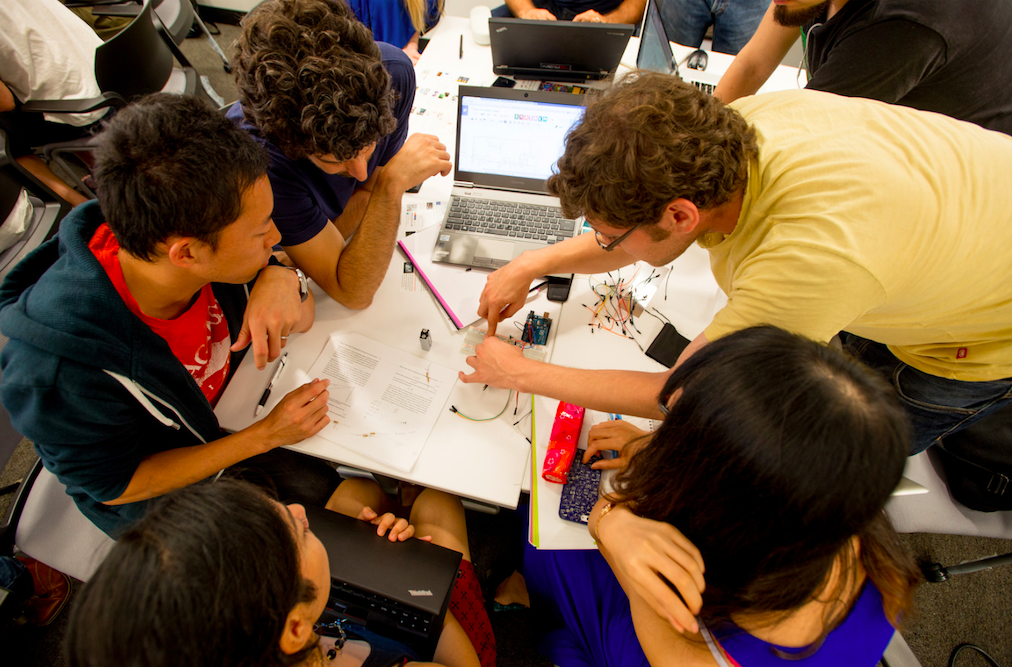by Roger Archibald
Photo credit: John Werner
Ramesh Raskar, head of the Media Lab’s Camera Culture Group, takes measure of the world in multiples of a billion—the Earth’s expanding population, the complexity of the problems people will face, the costs that will be incurred, and even the partnerships and performance of solutions his team is creating at MIT.
It’s a theme he frequently repeated during his keynote address at the 28th User Interface Software and Technology (UIST) Symposium in Charlotte, NC, last November. “As we think about the next billion people who are becoming newly digital,” he stated early in his talk, “the solutions for them are going to be very unique.”
Raskar’s dilemma is outreach. At the Media Lab, his team has an abundance of resources and is very productive, but the billions of people they hope to impact aren’t found in Boston or even in the United States. His solution, true to the UIST conference’s focus, is to discover new interfaces worldwide. And not just the basic digital user interface, but a far more holistic rendering of the concept.

Displaying an image of a pencil being used to hand-spool a tape cassette, Raskar demonstrates how the writing device inadvertently became an interface to music, suggesting that you never know how something you build for one purpose might end up being used for something entirely different out in the community. In the past, problems in health, education, transportation and agriculture remained unsolved for lack of a good digital interface with the computing world, but there are now great opportunities to impact the physical world in areas where it simply couldn’t happen before.
Part of that opportunity is due to the way the Media Lab has revolutionized its entire approach to conferring advanced degrees. The long established process of dissertation writing and journal publication has been eclipsed by project demonstration and deployment. With the capability to easily produce prototypes, instead of just writing a paper, “the paradigm shifted from ‘publish or perish’ in the past to ‘demo or die,’” Raskar says. But he takes that one step more. “Through hardware technologies, software platforms, cloud architectures and worldwide networks, it’s evolved further to become ‘demo and deploy.’” Echoing the words of Media Lab Director Joi Ito, he adds, “So the new mantra around here has become ‘deploy or die.’”
These changes have led to numerous projects emanating from Raskar’s lab. Utilizing the extremely high resolution displays of current smart phones, his team developed the EyeNetra , a snap-on phone interface for examining vision which can be self-administered to scan one’s eyes for nearsightedness, farsightedness, astigmatism and even cataracts. A similar innovation called the EyeSelfie goes a step further, allowing someone to photograph the retina of their own eye. For people with an eyeglass prescription, but lacking glasses, his team developed a vision correcting computer display interface which can be sharply tuned to an individual’s corrective visual needs. Other innovations from his lab include fluorescence lifetime imaging, which allows a user to detect bloodstream evidence of malignant tumors utilizing an interface similar to a blood pressure cuff, and a biorhythmic identity verification device requiring no password or other active entry data. What all these devices have in common is the empowerment of the end user.
Considering all the projects his lab is currently developing, Raskar realized that doing them one at a time with masters and PhD candidates in an academic setting could take up to twenty years. How could they speed up this timeline, he wondered?

The answer is an initiative called REDX : Rethinking, Engineering, Design, eXecution. Neither a competition nor a hackathon, it’s a highly curated research exploration through which local innovators are engaged to find the right problems to work on. Then rather than solve them in the lab, innovators from all over the world work together to create solutions. Raskar refers to this emphasis of interfacing so many people in the same innovative effort as “intelligence amplification,” which he contrasts with artificial intelligence. “As good as AI is,” he states, “IA can beat AI.”
Initially, REDX focused its attention on finding interface solutions for the blind and visually impaired in India, where close to half of the world’s population of such people live. But the initiative now looks beyond vision to include oral health, sleeping disorders, ear infections, and hearing tests. Fundamental to Raskar’s research philosophy is his belief that empowering the most underutilized resource in a healthcare setting—the patient—leads to the most solutions.
But beyond REDX, Raskar realized the need for a third model to solve digital problems for physical systems with hundreds of inventors, innovators and practitioners. So he decided to not just look at imaging and health solutions, but at a whole collection of problems that could be targeted in a single, integrated place.

And the perfect example of that is the Kumbh Mela in India, where for thousands of years, 30 million people have gone on a 30-day pilgrimage to a very colorful, very beautiful, very safe festival that is one of the largest human gatherings on Earth. For authorities, the vast crowds present many challenges, usually tackled through a lot of police, paramedics and a huge top-down infrastructure. Raskar’s team began exploring the Kumbh Mela for digital opportunities to interface with local government, universities and businesses, looking at pop-up housing, food distribution and sensing technologies using cell phone tower data, among other options, to manage the crowds. “And it’s just been fascinating,” he explains.
Considering massive gatherings like the Kumbh Mela, Raskar realizes, “It’s clear that when we talk about the intersection of these emerging interfaces and emerging worlds, we cannot think linearly. We cannot just scale the way we’ve been scaling. With billions of new digital citizens—over 30 million new users coming online every month by some counts—we can truly co-innovate.”
Raskar concluded his keynote remarks with a prediction. “Moving forward, we will get health solutions without hospitals. We will learn without schools. We will grow food without depending on farms. And we’ll transact in a non-currency. So the digital opportunities for physical systems are huge. The world is our lab, so let’s solve the billion dollar problems that will touch a billion lives.”

